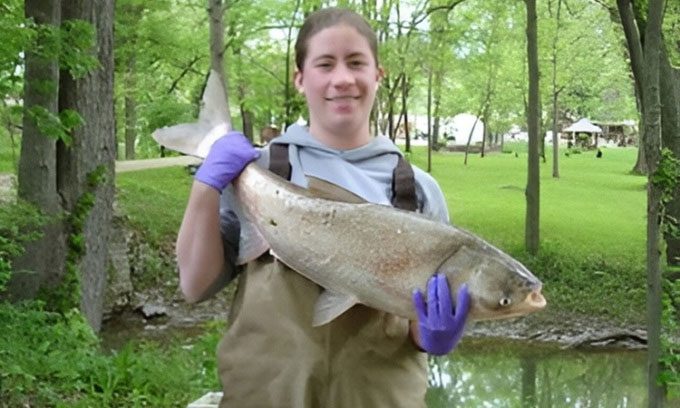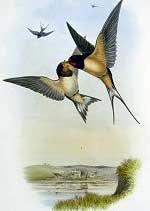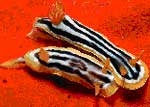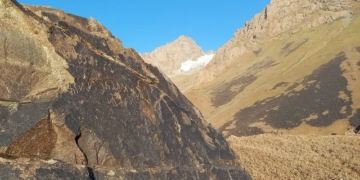Invasive carp species such as bighead carp, grass carp, and black carp pose a significant threat to the ecosystems of South Dakota, potentially spreading and overwhelming native wildlife.
Invasive carp, also known as Asian carp, have become a major threat to rivers and lakes in South Dakota, a precious natural resource for thousands of fishermen, boaters, and water sports enthusiasts each year. This is why a research team from South Dakota State University (SDSU) is collaborating with the South Dakota Game, Fish and Parks agency to ensure that this natural resource is not overrun by “the most hated fish in America,” as reported by Phys.org on November 15.

Alison Coulter with invasive white carp. (Photo: South Dakota State University)
Alison Coulter, an assistant professor in the Department of Natural Resource Management at SDSU, is well aware of the challenges posed by invasive carp. As a post-doctoral researcher, Coulter studied invasive carp in the Illinois River, a waterway where this species has thrived. Now in South Dakota, Coulter and her colleagues are seeking to better understand how to prevent a similar invasion.
In the United States, there are two distinct types of carp: common carp and Asian carp. Fishermen in South Dakota may be more familiar with common carp, which inhabit nearly every waterway in the state. They were introduced to the U.S. from Europe in 1831 and have spread nationwide as a food source. Although they are considered an invasive species, they have become naturalized in the state’s rivers and lakes.
Asian carp, a general term for four species of carp, have a very different history. They are native to East Asia and were brought to the U.S. in the 1970s to help clean fish ponds, aquaculture facilities, and wastewater treatment ponds. Eventually, floods allowed them to escape into the wild. By the early 2000s, invasive carp populations were established throughout the Mississippi River basin, the Missouri River, and later in rivers in Ohio and Illinois.
The invasive carp species include several different types, each with unique characteristics that can lead to ecological devastation. Bighead carp and silver carp are among the most common and abundant species. Bighead carp consume zooplankton while silver carp feed on phytoplankton. Both species directly compete with native fish for food. Populations of bighead and silver carp can quickly deplete large amounts of plankton, much like a lion.
Silver carp, also known as “flying carp,” have the ability to jump up to three meters out of the water. When invasive, hundreds of silver carp can leap behind the motor of a boat. This poses a danger to passengers and water skiers, who can easily become unconscious if struck by a silver carp.
Grass carp are similar to common carp and primarily feed on aquatic vegetation. Due to their feeding habits, grass carp pose a starvation threat to wetlands as they destroy the habitats of native fish, birds, amphibians, and reptiles.
The final invasive carp species is the black carp, which mainly feeds on snails, clams, freshwater shrimp, insects, and crayfish. However, they do not consume zebra mussels, another invasive species that South Dakota is trying to manage. They also directly compete for food with fish, turtles, birds, otters, and muskrats.
Like common carp, invasive carp are highly opportunistic feeders and can grow rapidly. In fact, they grow so quickly that it takes only a few months for young carp to surpass all natural predators. Due to their rapid reproduction rates, they are causing ecological disturbances in waterways. Water levels in South Dakota have been rising over the past few decades. Combined with increasing flooding, this condition allows invasive carp to spread to new areas. For instance, the floods of 2011 caused the Missouri River to overflow into Lake Yankton, a small reservoir below the Gavins Point Dam. As a result, several invasive carp species entered both Lake Yankton and the James River. Notably, silver carp dominate the river near Yankton in such numbers that they often collide with local boats.
Once invasive carp invade a waterway, it is nearly impossible to completely eliminate them. This is why preventative measures are crucial to prevent their spread. In Chicago, local authorities have spent billions of dollars on a special barrier to prevent invasive carp from entering the Great Lakes, where they could disrupt the $7 billion commercial fishing industry and the more than $10 billion tourism sector. Similar to the Great Lakes, South Dakota authorities are concerned that if invasive carp reach the Missouri River above Gavins Point, the native walleye populations will decline significantly.





















































